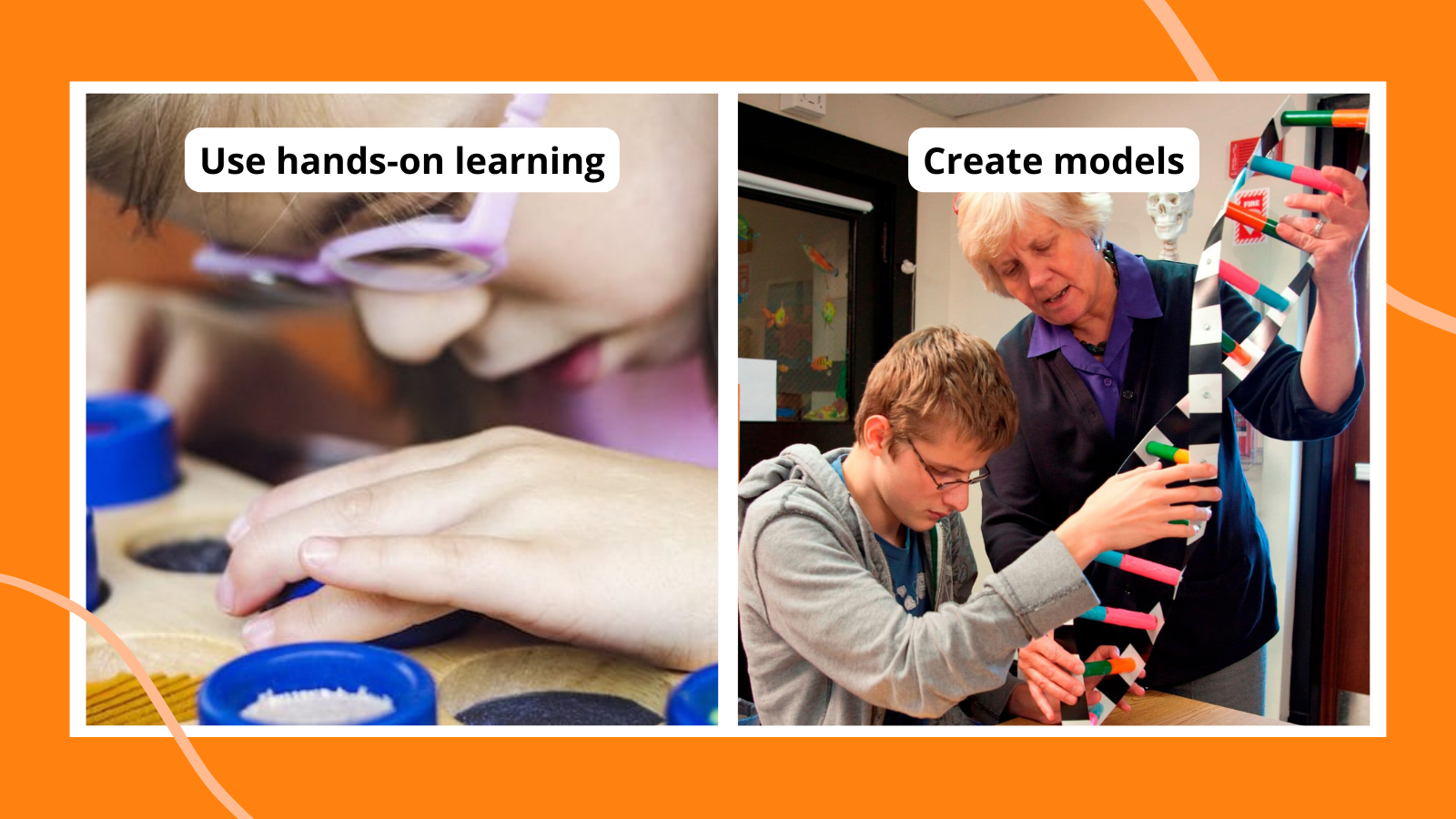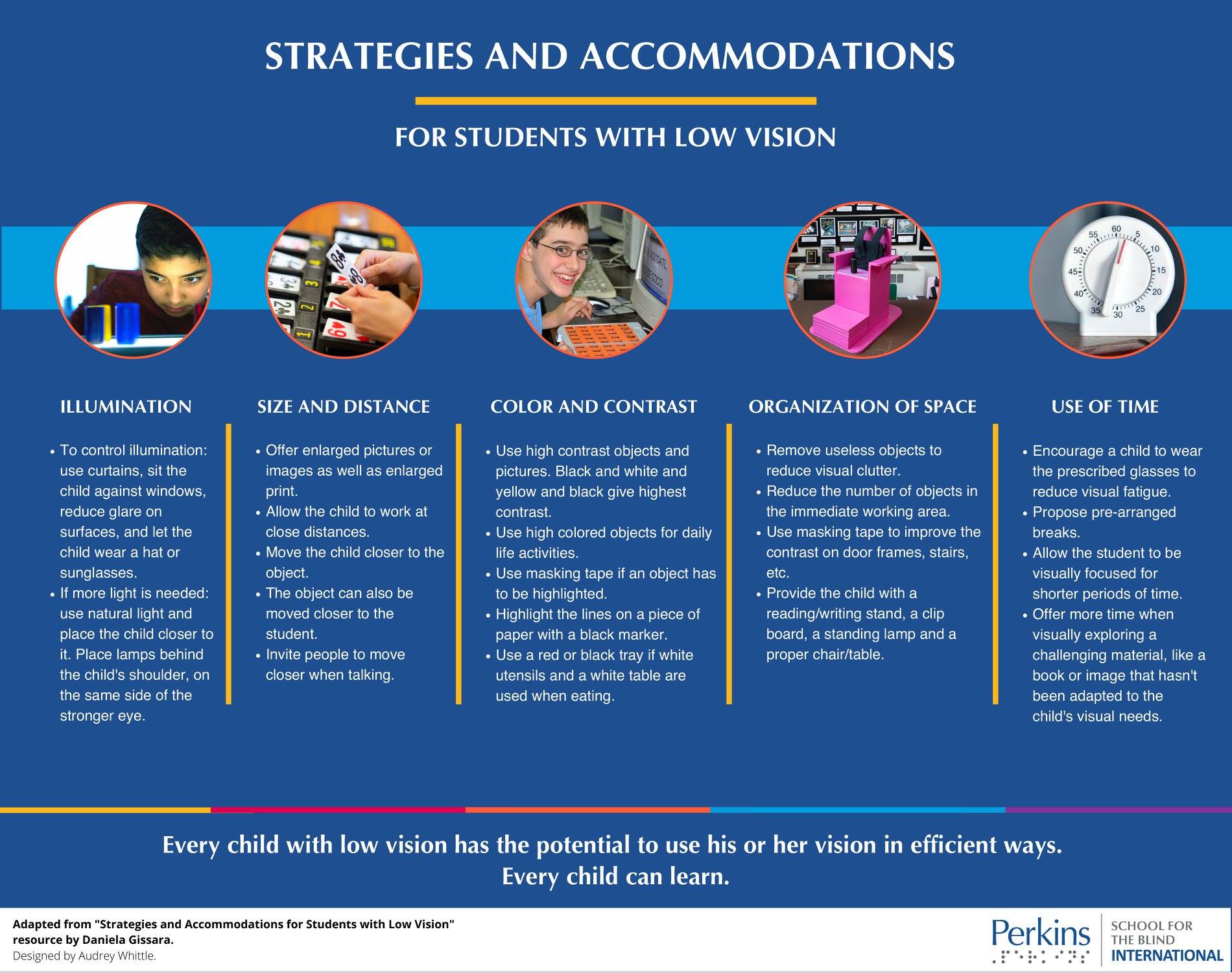

The average classroom is designed for fully sighted students. But according to the CDC, nearly 3% of children under the age of 18 are blind or visually impaired. Some of these children attend schools that specifically teach blind students, but others enroll in their local public or private schools. As a teacher, you may wonder how to accommodate these students to give them the best chance to succeed. That’s why we’ve asked some experts to offer practical tips you can use every day for teaching blind or visually impaired students.
When you hear the term “blind,” you likely think of someone who has no vision at all. But that’s just one part of the visual spectrum. Here are some other terms you should know.
Students may fall anywhere along this spectrum, so it’s important to know more about their specific level of impairment. They may have an IEP or 504 on file, so study it carefully to learn what you can do to help them do well in your classroom.

The debate continues about “person-first” vs. “identity-first” language, and the correct terms to use to describe those who are differently abled. Some organizations and people prefer the terms “blind person” or “visually impaired person.” Others encourage the use of “person who is blind” or “person with visual impairment.” In this article, we’ve used both forms, since you’re likely to encounter them both in the real world. We recommend asking affected students in your classroom if they have a preference, and follow their lead.
Charlene Laferrera, MEd, is a Certified Teacher of the Visually Impaired (TVI). She’s spent 30+ years working in various school systems, including the Perkins School for the Blind, with students ranging in age from birth to 22 years of age.
Magali Gueths, MEd, has been a Certified Orientation and Mobility Specialist (COMS) for 20+ years, working in various locations and school districts. Gueths has a fully blind son, so she innately understands the needs of blind and visually impaired students.
Additional comments were provided by classroom teacher contributors on our We Are Teachers HELPLINE group on Facebook.

Laferrera and Gueths assembled this list of tips for teachers who work with students who are blind or visually impaired. Overall, they stressed the importance of ensuring these students always have access to a COMS or certified TVI in their schools. They also offer these day-to-day actions for helping blind or visually impaired students succeed.
Always use a visually impaired student’s first name when addressing them. This way they will know you are talking to them and not someone else. When passing them in hallways, instead of saying, “Hi,” have people announce their names, as blind or visually impaired students may not be able to recognize faces. For example: “Hi Sara, it’s Mrs. Murphy. How are you today?” Prompt fellow students to do the same because this fosters connection in the school community.
Don’t avoid words like “see” and “look.” Just like their sighted peers, these words should be part of a blind or visually impaired student’s vocabulary to connote how they see, whether by touch, bringing things close, or in normal conversation, like saying “see you later!”
ADVERTISEMENTWhen writing on the board, always verbalize what you are writing so the student has access to that information and can follow along. Use positional and directional concepts like above/under, on top, behind/in front of, left/right, etc., and use descriptive sentences like “The ball is next to the door” instead of “The ball is over there.” Avoid words and phrases like “here,” “there,” “over here,” and “over there,” and gestures that provide direction, e.g., pointing to a location without verbalizing what is being pointed to, because visually impaired students cannot see that.
Don’t ask a student, “Can you see this?” They often can see it, but that does not mean that they can access it or read it. Instead ask, “Can you find X?” or “Can you identify all the words and numbers without guessing?” or “Can you see some parts of the board better than others?”
Always favor the stronger side of the student’s vision due to visual field deficits. For example, if the student only uses their left eye, they would need to sit on the right side of the classroom away from the windows. Seating that faces a light source (sun, windows) should ideally be at their back.
When teaching visually impaired or blind students, use contrast for everything. Think, “bold, big, and simple!” Use bright balls in contrast with the floor at the gym. Stairs should have at least the first and last steps taped with a contrasting color (typically yellow) at the edge of the step.
When in line, direct a blind or visually impaired student’s attention to the child in front of them using color of clothing or hair and have them model/follow what that child is doing (stopping, walking straight, turning, etc.), always moving slowly for safety.
If you need to be a sighted guide for a preschooler, offer two fingers or your wrist for them to hold. You are not holding them unless it is for their safety. For older students, they hold just above your elbow with their dominant hand.
Students need to understand the “rules of the road” and always use the right-hand side of hallways or the right railing. When teaching blind students, use boundaries like cones in the gym, lines on the pavement to follow from school to the playground, etc. If there are changes to the classroom, walk the student through alone so they know where things are.
Be aware of your own acceptance and your beliefs surrounding what a student who is blind or visually impaired can do both in your classroom and as a professional. Your acceptance of a student who has a visual impairment will serve as an example to all the students in your class.
“Be super organized with your space and don’t change things. Train the other kids to not leave their stuff in unexpected places. Movement routines and transitions should be well planned. Be open to listening to constructive feedback and adjusting your methods and practice on the fly a bit as stuff comes up.” —Christine A.
“Do you know what kind of assistive technology the student will have? I taught a completely blind student a few years ago. He had a para to assist him, and I had to send materials to our assistive technology office in advance to have it converted to Braille. I teach math, so he had a board with magnetic braille letters and numbers and symbols, so I could re-create what was on the board for him. He also had a calculator that would speak his answers aloud through headphones.” —Kristin L.
“Your student’s parents can be your best resource. After all, they’ve known them their whole lives. Meet with parents well ahead of their child’s first day and partner with them to learn what is best for the student’s needs.” —Tammy D.
“I used puffy paint for diagrams (for example, parts of a plant cell), label all my lab equipment in braille (the cost to purchase a label maker was my dime), and use different bumpy stickers. Make sure the student has a braille program that when they type on their computer you can print it out in English. Also make sure there is a plastic cover that labels each key with its correct braille symbols. Finally, make sure you have the ability to type in braille so they can read the assignments, homework, and tests.” —Elaine W.